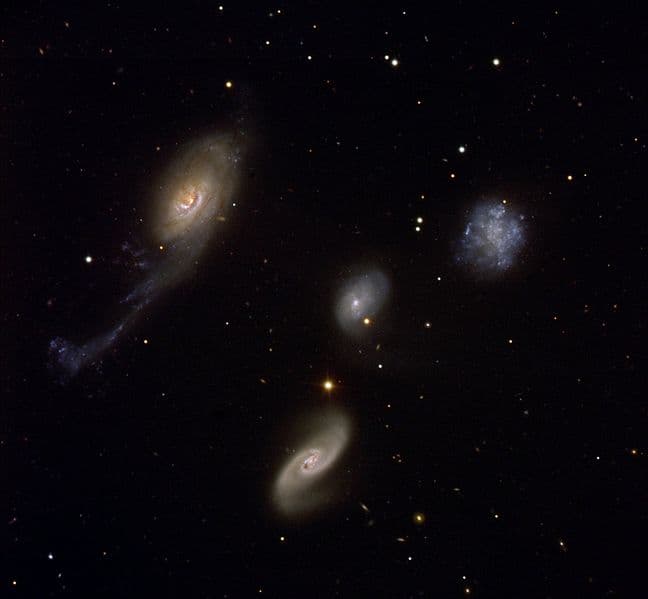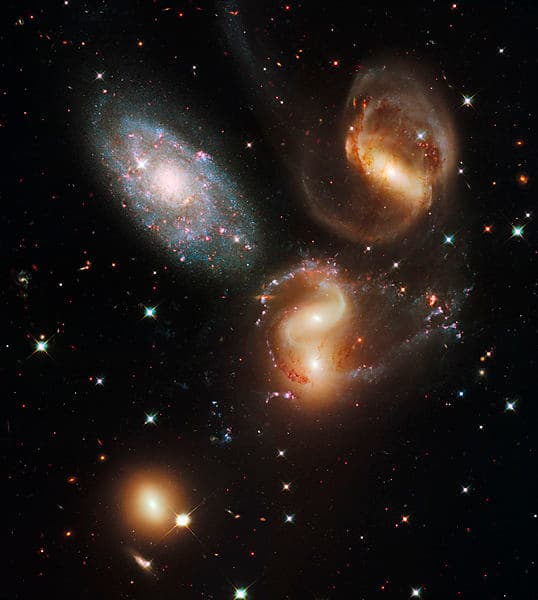There has been a surprising affinity between astronomy and music. Both needed the inspiration of the muses to be performed in Ancient Greece, and expressions like the Music of the Spheres just shows the profound link between these two realms of human genius.
In space, nobody can hear you scream, but it didn’t stop Coltrane or Holst to be inspired by it in their incredible works.
But astronomers are just as passionate about music, as musicians may be about astronomy.
And here’s my contribution from my niche of expertise. Three bands of galactic proportion.

First up is Robert’s Quartet, a small and dense group of galaxies approximately 160 million light-years away.
This multiple collision shows four different galaxies in the process of merging, NGC 87, NGC 88, NGC 89 and NGC 92. A fifth galaxy, NGC 101, is also loosely related.

Next, is Stephan’s Quintet the first compact group ever discovered, observed for the first time in 1877 by French astronomer Édouard Stephan. Robert’s quartet was first observed in 1830 by William Herschel but it was not recognised as it is made of distinct objects.
The Quintet is a visual grouping of five galaxies, four of which are actually merging. Notable is the brightest member of the group NGC 7320. This is currently going through an intense star-formation phase, visible in the red blobs, which are stellar nurseries.

And to end on a high note, Seyfert’s Sextet. The group was seen as made of six members (I think the sextet name was a giveaway) but two members don’t belong there. One galaxy is actually a background object, and another “Galaxy” is actually just a fragment of one of the four merging galaxies. They are located about 190 million light-years and they are in the early stages of the galaxy collisions.
Galaxy mergers are usually seen as the cosmic ballet of large structures in the universe, but a ballet needs music, so the quartets, quintets, sextet and the most common duet accompanies the galaxies for millions of years until gravitational interaction, turn these spirals into giant elliptical galaxies.

